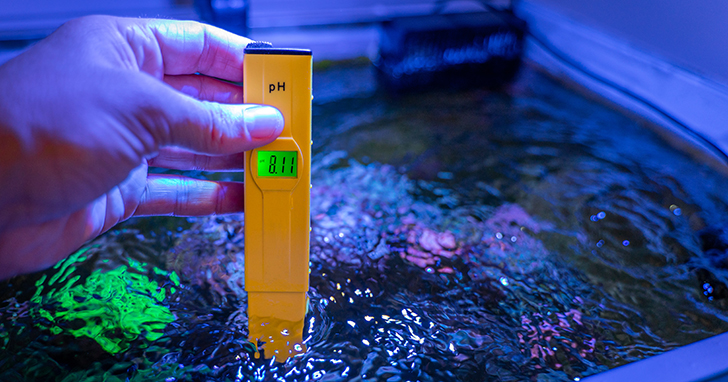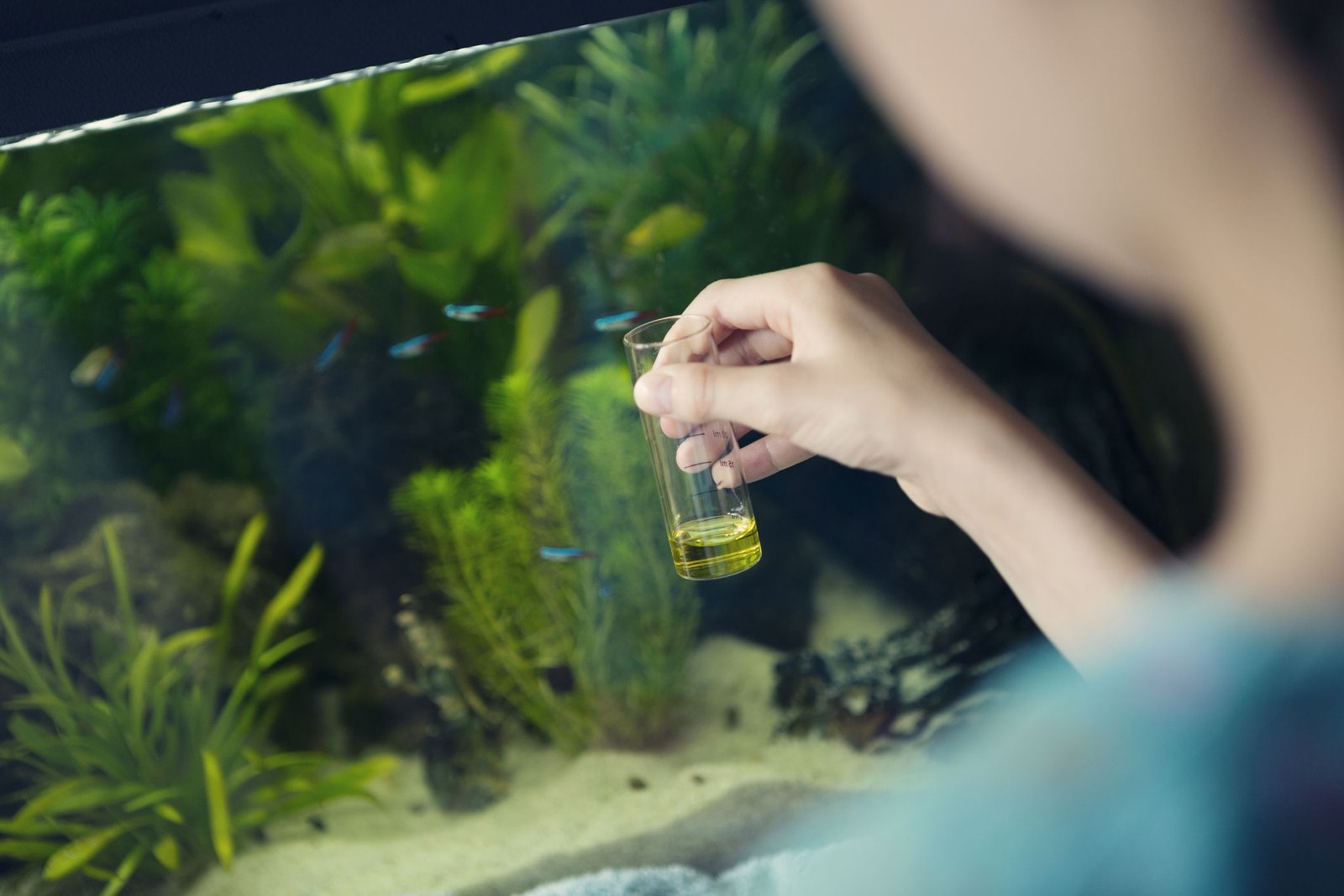To control for healthy fish in your aquarium, it is essential to monitor and maintain the water parameters such as temperature, pH, ammonia, nitrite, and phosphate levels. Proper maintenance of these parameters helps create a suitable environment for your fish, ensuring their overall health and well-being.
Importance Of Aquarium Water Parameters
Maintaining proper aquarium water parameters is crucial for the health of your fish. It is important to monitor and control factors such as ammonia, nitrite, phosphate, and pH levels to ensure a safe and thriving environment for your aquatic pets.
The Impact Of Water Parameters On Fish Health
Aquarium water parameters play a vital role in maintaining healthy fish in your tank. Understanding and controlling the critical water parameters is essential to create an optimal and stable environment for your aquatic pets. These parameters directly affect the overall well-being, growth, and reproduction of your fish.
Understanding The Critical Water Parameters
It is crucial to have a clear understanding of the critical water parameters that impact your fish’s health. Let’s take a closer look at each parameter:
- P pH: The pH level measures the acidity or alkalinity of the water. Different fish species thrive in different pH ranges, so it is important to maintain the appropriate pH level for your specific fish.
- Ammonia and Nitrite: These two parameters are toxic to fish if present in high levels. Ammonia is released from fish waste and excess organic matter, and it can quickly build up in the tank. Nitrite is produced during the breakdown of ammonia. Both ammonia and nitrite should be kept at a level of 0 ppm for the well-being of the fish.
- Temperature: Fish are ectothermic, which means their body temperature is influenced by the surrounding water. It is crucial to maintain a stable temperature range suitable for your specific fish species.
- General Hardness (GH) and Carbonate Hardness (KH): GH measures the overall mineral content in the water, while KH measures the buffering capacity of the water. Both parameters are essential for maintaining a stable environment and preventing pH fluctuations.
- Dissolved Oxygen: Fish depend on dissolved oxygen in the water for their survival. Ensuring adequate oxygen levels are crucial, especially in densely stocked or heavily planted tanks.
- Other parameters: Depending on your specific fish species, additional parameters such as salinity, nitrate, phosphate, and trace elements may also need to be monitored and controlled.
By keeping these crucial parameters within the appropriate ranges, you will provide your fish with a stable and healthy environment. Regular monitoring, water testing, and necessary adjustments are essential to maintain optimal conditions for your fish’s well-being.

Credit: www.liveaquaria.com
Maintaining Optimal Water Parameters
Keeping your aquarium water parameters within the ideal range is crucial for the health and well-being of your fish. By maintaining the right water conditions, you can prevent diseases, stress, and other issues that can harm your fish. Let’s explore some key strategies to help you maintain optimal water parameters.
Choosing The Right Water
When setting up your aquarium, it’s important to choose the right type of water. Depending on the species of fish you have, you may need freshwater or saltwater. Research the specific requirements of your fish to determine the appropriate water type.
Avoiding Overfeeding
Overfeeding is a common problem that can lead to poor water quality. Uneaten food accumulates on the bottom of the tank, producing excess waste and causing ammonia and nitrate levels to rise. Feed your fish small portions only as much as they can consume in a couple of minutes, and remove any uneaten food promptly.
Regular Water Testing
Regular water testing is essential to monitor the quality of your aquarium water. Test the levels of pH, ammonia, nitrite, nitrate, and other parameters using a reliable aquarium water test kit. This will allow you to detect any imbalances or issues early on and take appropriate measures to correct them.
Implementing Water Changes
Regular water changes are crucial for maintaining optimal water parameters. Over time, waste and other pollutants build up in the water, affecting its quality. Aim to change 10-15% of the water every week to remove these toxins and replenish it with fresh, clean water. This will help keep your fish healthy and happy.
Guidelines For Healthy Aquarium Water
Learn how to maintain healthy fish in your aquarium by controlling the water parameters. Avoid overused terms and phrases, use brief sentences, and provide unique and plagiarism-free content. Maintain the reader’s interest with varied sentence beginnings and provide valuable information without a conclusion paragraph.
Produce SEO friendly content that is easy to understand and passes AI writing detection.
Acclimating Fish To The Water
One of the most important steps in ensuring the health of your fish is acclimating them to the water in your aquarium. Fish can be sensitive to sudden changes in water temperature and chemistry, so it’s crucial to introduce them slowly and gradually.
To acclimate fish to the water, float the bag containing the fish in your aquarium for about 15-20 minutes. This will allow the temperature in the bag to adjust to that of the tank. Afterward, you can open the bag and add small amounts of water from the aquarium to gradually mix with the water in the bag. This process, known as drip acclimation, helps the fish adjust to any differences in pH or chemical levels between the bag and the tank. Repeat this process every 10-15 minutes for about an hour, gradually increasing the amount of tank water in the bag.
Maintaining Ph Balance And Chemical Levels
Proper maintenance of pH balance and chemical levels in the aquarium water is vital for the overall health and well-being of your fish. Different species of fish require specific pH ranges to thrive, so it’s essential to monitor and adjust the pH levels accordingly.
Regularly test the water using a reliable freshwater master test kit to ensure the pH level stays within the appropriate range for your fish. If the pH levels are too high or too low, you can make adjustments using pH adjusters or buffers that are specifically designed for aquarium use. Remember to follow the instructions provided by the manufacturer when using these products.
In addition to pH levels, it’s important to monitor and control other chemical parameters such as ammonia, nitrite, and nitrate. These chemicals can be harmful to fish if their levels become too high. Maintaining a healthy nitrogen cycle by providing good filtration and performing regular water changes can help keep these chemicals in check.
Ensuring Appropriate Water Temperature
Water temperature is another crucial factor in maintaining a healthy aquarium. Different fish species have specific temperature requirements, and it’s important to provide them with an environment that suits their needs.
Ensure the water in your aquarium is kept at the appropriate temperature range for your fish. Use a reliable aquarium heater to maintain a stable temperature and avoid sudden fluctuations. Regularly monitor the temperature using a thermometer to ensure it remains within the recommended range.
Remember that some species of fish may require a slightly higher or lower temperature than others, so it’s essential to research the specific temperature requirements of the fish in your aquarium.
Cleaning The Tank And Choosing Compatible Fish
Regular tank maintenance and choosing compatible fish species are essential for creating a healthy aquarium environment.
Regularly clean the tank by removing any debris or uneaten food using a siphon or gravel vacuum. This will help prevent the buildup of harmful substances and maintain good water quality. Clean the tank glass and other structures using a non-toxic algae scraper or sponge to keep the environment visually appealing and free of algae.
When selecting fish for your aquarium, consider their compatibility with other fish in terms of behavior, size, and water requirements. Some fish may be aggressive towards others or have specific needs that may not be met in the same tank. Research the different species and their compatibility to ensure a peaceful and thriving community.

Credit: www.bulkreefsupply.com

Credit: www.aquariumcoop.com
Frequently Asked Questions For Aquarium Water Parameters To Control For Healthy Fish
What Is The Most Important Parameter To Improve The Health Of Your Fish Tank?
The most important parameter to improve the health of your fish tank is water quality.
What Are Good Water Parameters For Fish Tank?
Good water parameters for fish tank include maintaining temperature between 72-82°F, pH level between 6. 5-7. 5, and ammonia and nitrite levels at 0. 0. Regular testing and monitoring of these parameters is necessary for healthy fish.
How Do I Keep My Fish Healthy In My Aquarium?
To keep your fish healthy in your aquarium, follow these steps: acclimate your fish to the water, maintain pH balance and other chemical levels, ensure the water temperature is right, change water regularly, and clean the tank. Also, choose the right size for your tank and pick compatible fish species.
How Do I Control The Quality Of My Aquarium Water?
To control the quality of your aquarium water, follow these steps: 1. Start with purified water. 2. Avoid overfeeding your fish. 3. Replace mechanical and chemical filter media regularly. 4. Test the water regularly for ammonia, nitrite, and pH levels.
5. Perform regular water changes. Remember, maintaining good water quality is crucial for healthy fish.
Conclusion
Maintaining proper water parameters is crucial for the health of your aquarium fish. By monitoring ammonia, nitrite, phosphate, and pH levels, you can prevent harm to your fish. Additionally, ensure optimal temperature, general hardness, and acidity to create a suitable environment.
Regular water testing and necessary adjustments will promote the overall well-being of your aquatic friends. Remember, healthy water leads to healthy fish!


